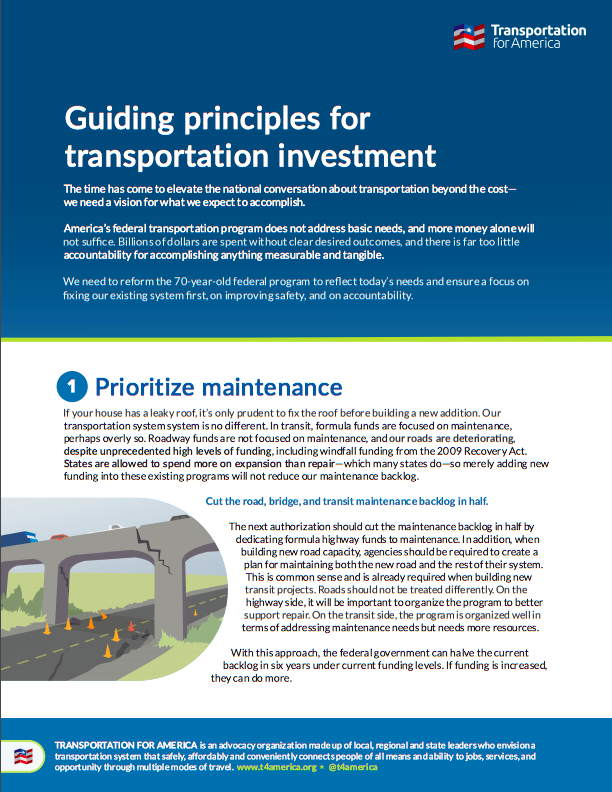Competition: Which street is the most dangerously-designed?
This week, we’ll be taking a deep dive on our second principle for transportation policy: design for safety over speed. Throughout the week, send photos of streets in your area that are designed for speeds far higher than the posted speed limit or where the speed limit is way too high for the context. On Friday (Nov. 8), you’ll have a chance to vote for the worst offender.
Safety over speed week: There’s one thing that almost every fatal car crash has in common
We face an epidemic of people struck and killed while walking and biking because our local streets—not just highways—are designed to move vehicles at the highest speeds possible rather than prioritizing the safety of everyone. It’s high time to stop sacrificing safety on the altar of speed with the billions that we spend every year. Here’s how Congress could make that happen.
Do climate plans do enough on transportation?
Climate change has become a top issue for Americans, so how do the top Democratic candidates plan to reduce emissions? Here’s a brief look at what some of the presidential candidates are proposing when it comes to emissions from transportation.
Washington State leads in transportation improvements—one ballot measure could end all that
This November, Washington residents will vote on a ballot measure that would slash available funding for transit agencies as well as road maintenance and safety projects by limiting annual vehicle registration fees to $30 and reducing vehicle taxes. As gas tax and other transportation revenue failed to grow the way it used to in the […]
Three things we learned from talking about maintenance this week
Last week was “maintenance week” at T4America, a week spent focusing on our first new principle for transportation investment to prioritize repair and commit to reducing the repair backlog by half. After a Twitter chat on Wednesday, on Thursday we joined a briefing on Capitol Hill for congressional staffers focused on the issue. Here are three quick things we learned.
Our three policy recommendations for cutting the maintenance backlog in half
Yesterday we discussed our first of three new principles and outcomes for transportation investment: “Prioritize repair.” But how? Today we’re taking a quick look at three policy recommendations Congress should consider implementing to help reduce the maintenance backlog by half. For decades, presidents, governors, and members of Congress from both parties have decried our crumbling […]
It’s time for Congress to actually set a goal for repairing our infrastructure
We shouldn’t build new roads before fixing the ones we have. But that’s not how the federal transportation program is designed. Despite funding boosts, our backlog of maintenance needs have only increased because there is no requirement that federal funds be spent on repair. The concept of fixing what you have before buying something new—when […]
Members of Congress launch a new caucus on transportation policy
Today, Representatives Chuy García (IL-4), Ayanna Pressley (MA-7), and Mark Takano (CA-41) launched a new caucus dedicated to creating a vision for the future of our transportation system that emphasizes equity, access, and sustainability.
The Senate’s first transportation reauthorization bill gets an F
Authorizing federal spending on surface transportation is complicated, with different Congressional committees writing separate portions of the bill. That’s why we’ll score every reauthorization bill by how well it achieves our three simple principles for transportation investment. The America’s Transportation Infrastructure Act fails on all counts.
Rural areas desperately need a transportation overhaul, too
People disparage rural areas with the term “flyover country,” but our federal transportation program currently treats rural areas even worse—as “driveover” country. If Congress adopts Transportation for America’s three new policy principles, transportation investments could truly help rural areas prosper.





